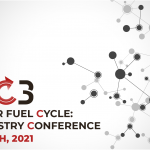For more than 15 years, the GEN IV International Forum (GIF I www.gen-4.org) has been supporting the development of advanced reactors and associated fuel cycles to allow a better use of resources. In 2002, the GIF selected 6 GEN IV systems among 100 as reference systems:
- gas-cooled fast reactor (GFR)
- lead-cooled fast reactor (LFR)
- sodium-cooled fast reactor (SFR)
- molten salt reactor (MSR)
- supercritical-water-cooled reactor (SCWR)
- very-high-temperature reactor (VHTR)
In Europe, the Sustainable Nuclear Energy Technology Platform (SNETP I http://www.snetp.eu/), through its European Sustainable Nuclear Industrial Initiative (ESNII), aims to advance the development of GEN IV technologies, while supporting research infrastructures, fuel facilities and research & development activities.
SNETP has prioritised the different Gen-IV systems and is proposing to develop the following projects through ESNII:
- The sodium-cooled fast neutron reactor technology (ASTRID project), with the construction of a prototype in France and which is strongly supporting this technology
- As a first alternative technology, the lead-cooled fast reactor (ALFRED) with the construction of an experimental demonstration reactor in another European country willing to host the programme, and supported by a lead-bismuth irradiation facility project in Belgium (MYRRHA)
- As a second alternative technology, the gas-cooled fast reactor (ALLEGRO), also requiring the construction of technology demonstrator in a European country
Both ASTRID and ALFRED use MOX fuel (potentially bearing minor actinides as reference fuel although nitride fuel is considered for ALFRED). MYRRHA, related to the double strata ADS concept, should also be started with MOX fuel.
It is therefore critical to develop the related fuel cycles allowing the fuel fabrication, the recycling of the spent fuel and potentially the minor actinides, and the associated waste management in a safe and reliable way.
This issue can only be addressed through the recycling of these elements. At this stage, Partitioning and Transmutation (P&T) operations can reduce the life excpectancy of these minor actinides, dividing them into other elements (fission) with a shorter life-cycle. Several recycling options are proposed today which bring the nuclear waste life to a human scale and reduce the volume of the waste by 90%.
Background information
About GENIORS
Context
Impacts and objectives
Results
20 years of European research
For more than 20 years, several European research projects have addressed issues related to the development of these advanced fuel cycles, both on the physics side (reactor) and on the chemistry/recycling side (fuel and waste).
Within the European partitioning community (from FP3, FP4 NEWPART, FP5 PARTNEW, FP6 EUROPART, FP7 ACSEPT and FP7 SACSESS), reference separation process flowsheets are now available for both the heterogeneous recycling (recycling of the minor actinides in dedicated blanket fuel surrounding a U/Pu fuel; i-SANEX, EXAM concepts) and the homogeneous recycling (all the actinides are together in all the fuel assemblies; GANEX concept) of used nuclear fuels.
Initially developed for an oxide fuel cycle, their compatibility with other types of fuel (carbide, nitride) have been addressed in FP7-ASGARD. They have to be integrated in global scenarios, “from fuel to fuel” to really achieve the demonstration of their relevance. In addition, FAIRFUELS and PELGRIMM have addressed the fuel side by studying the behaviour of these fuels in reactor.




